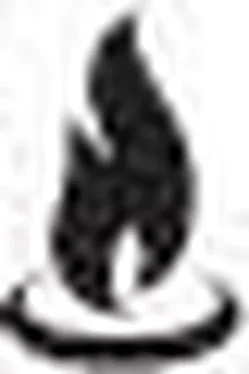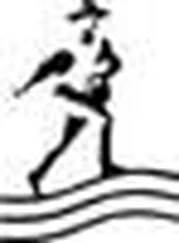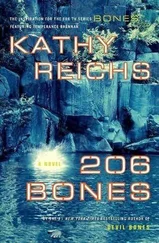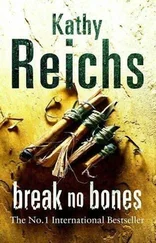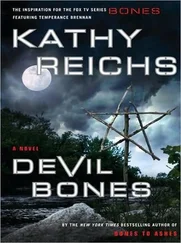Kathy Reichs - Bones to Ashes
Здесь есть возможность читать онлайн «Kathy Reichs - Bones to Ashes» весь текст электронной книги совершенно бесплатно (целиком полную версию без сокращений). В некоторых случаях можно слушать аудио, скачать через торрент в формате fb2 и присутствует краткое содержание. Жанр: Старинная литература, на английском языке. Описание произведения, (предисловие) а так же отзывы посетителей доступны на портале библиотеки ЛибКат.
- Название:Bones to Ashes
- Автор:
- Жанр:
- Год:неизвестен
- ISBN:нет данных
- Рейтинг книги:5 / 5. Голосов: 1
-
Избранное:Добавить в избранное
- Отзывы:
-
Ваша оценка:
- 100
- 1
- 2
- 3
- 4
- 5
Bones to Ashes: краткое содержание, описание и аннотация
Предлагаем к чтению аннотацию, описание, краткое содержание или предисловие (зависит от того, что написал сам автор книги «Bones to Ashes»). Если вы не нашли необходимую информацию о книге — напишите в комментариях, мы постараемся отыскать её.
Bones to Ashes — читать онлайн бесплатно полную книгу (весь текст) целиком
Ниже представлен текст книги, разбитый по страницам. Система сохранения места последней прочитанной страницы, позволяет с удобством читать онлайн бесплатно книгу «Bones to Ashes», без необходимости каждый раз заново искать на чём Вы остановились. Поставьте закладку, и сможете в любой момент перейти на страницу, на которой закончили чтение.
Интервал:
Закладка:
I’d completely forgotten about the diatom samples I’d taken from the teenaged girl found in Lac des Deux Montagnes. Ryan’s DOA number three.
Suskind answered on the first ring.
“Dr. Brennan. I was about to phone you again. My students and I are very excited about our findings.”
“You shared information with students?”
“Graduate level, of course. We found your challenge extraordinarily invigorating.”
Challenge? Invigorating?
“Are you acquainted with the field of limnology?”
“Diatoms have their own ology?” Intended as a joke. Suskind didn’t laugh.
“Diatoms are part of the class Bacillariophyceae of the Chrysophyta phylum of microscopic unicellular plants. Did you know that the members of this group are so numerous they represent the single most abundant oxygen source in our atmosphere?”
“I didn’t.”
I began doodling.
“Let me explain our procedure. First, we collected twelve samples from each of seven sites along the river and around Lac des Deux Montagnes, which is actually part of the river, of course, including L’Île-Bizard, near the point where the body was recovered. Those samples acted as our controls in examining diatom assemblages recovered from the victim. The ones we obtained from the specimens you provided. The bone plug and sock.”
“Uh-huh.” I drew a shell.
“At each site we collected from a variety of habitats. Riverbed. Riverbank. Lakeshore.”
I added spirals to the shell.
“Our control samples yielded ninety-eight different diatom species. The various assemblages are similar and share many species.”
I started a bird.
“The dominant ones include Navicula radiosa, Achnan —”
There are over ten thousand diatom species. Suspecting Suskind was launching into a full roll call, I interrupted. “Perhaps we could let that go until I have your written report.”
“Of course. Well, let me see. There are variations in the presence or absence of minor species, and changes in the proportions of the dominant species. That’s to be expected given the complexity of the microhabitats.”
I added tail feathers.
“Basically, the samples divide into three cluster zones. A midchannel habitat with a depth of over two meters, which experiences moderate water flow. A shallow water habitat of less than two meters, which experiences slow water flow. And a riverbank or lakeshore habitat, above water level.”
An eye. More plumage.
“Perhaps I should explain our statistical treatment. We do cluster analysis, to determine the clusters I just described.” Suskind made a honking sound, which I assumed to be laughter. “Of course. That’s why it’s called cluster analysis.”
I sketched a bill.
“To compare the control samples to the victim samples, we use a transfer function called modern analog technique. We calculate the dissimilarity between a victim sample and the most similar control sample, using the squared chord distance as the dissimilarity coefficient—”
“May we also leave quantitative analysis for the report?”
“Of course. The bottom line. We found that the diatom assemblages recovered from the sock show strong similarity to samples taken from the midlake channel and from the lakeshore.”
Webbed feet.
“Our analog matching technique suggests that the closest lakeshore analogy is with a control sample collected at the bottom of a boat ramp situated in the Bois-de-L’Île-Bizard nature preserve, not far from the body recovery site.”
My pen froze.
“You can pinpoint with that much precision?”
“Of course. What we do—”
“Where is this park?”
She told me. I wrote it down.
“What about the bone plug?”
“I’m afraid that’s a bit more complex.”
Suskind now had my full attention. “Go on.”
“The diatom flora from the bone’s outer surface is similar to that recovered from the sock. We recovered no diatoms from the marrow cavity.”
“Meaning?”
“Interpretation of negative evidence is always risky.”
“Suggest some scenarios.”
“Diatoms find their way into the body via inhalation, via ingestion, and via the aspiration of water. Whatever the initial pathway, assuming they are sufficiently tiny, the diatoms then circulate into the body’s organs and marrow. Diatoms are recovered from the bone marrow of approximately thirty percent of all drowning victims. They occur at significantly lower rates, perhaps as low as ten percent, in cases of bathtub or other city water drownings.”
“Because diatoms and other impurities are filtered out of domestic water,” I guessed.
“Of course. If present in domestic water, they’ve most likely come from household cleaners. But those are unique and recognizable species.”
“You found none.”
“We found nothing in the marrow cavity.”
“So it’s possible the victim may have drowned in treated or filtered water, not in the river?”
“It’s possible. But let me continue. The diatom concentration in bone marrow is usually proportionate to the diatom concentration in the drowning medium. That concentration varies due to the natural cycle of blooms and die-offs. In the northern hemisphere, diatom blooms occur in the spring and fall, creating persistently high levels in rivers and lakes throughout the summer. In winter, levels are typically at their lowest.”
“So the victim could have drowned in the river, but before this season’s bloom.”
“It’s another possibility.”
“When did this season’s bloom occur?”
“April.”
I was scribbling notes next to my doodles.
“Aspiration of water is required to transport the diatoms,” Suskind continued. “The transportation process works because diatoms are resistant to the mucus of the respiratory system and are able to embolize from the circulatory system into the internal organs.”
I knew where she was going. “Blood has to be pumping to get diatoms into the marrow.”
“Of course.”
“So the victim may not have been breathing when she hit the water.”
“It’s another possibility. But remember. Diatoms are found in only one third of all drowning cases.”
“Why such a low percentage?”
“Many reasons. I’ll give you the primary three. First, it may have to do with method of collection. If very few diatoms are present in the marrow cavity, they may simply be missed in sampling. Second, victims who hyperventilate and pass out under water or who experience laryngeal spasm may die more quickly, leading to a reduced quantity of inhaled water. Third, as I am sure you know, a relatively low volume of blood flows to and through the bone and bone marrow. And, for this individual, one bone plug was all I had. No samples from lungs, brain, kidney, liver, spleen.”
“When may I expect your report?”
“I’m completing it now.”
Thanking Suskind, I disconnected.
Great. The girl drowned or didn’t. In the river or elsewhere.
But the boat ramp. That was useful.
I called, but Ryan didn’t answer his cell. Of course. He was in court. I left a message.
The receiver had barely hit the cradle when the phone rang again.
“Having a nice day, kitten?” Male. Unaccented English.
“Who is this?”
“No matter.”
My mind looked for matches.
Cheech, the thug from Tracadie? I couldn’t be sure. He’d only spoken a sentence or two.
“Where did you get this number?”
“You’re easy to find.”
“What do you want?”
“Working hard fighting crime?”
I refused to be goaded.
“Noble endeavor, that. Protecting the good citizens of this province.”
Down the hall, a phone rang.
“But hazardous.”
Читать дальшеИнтервал:
Закладка:
Похожие книги на «Bones to Ashes»
Представляем Вашему вниманию похожие книги на «Bones to Ashes» списком для выбора. Мы отобрали схожую по названию и смыслу литературу в надежде предоставить читателям больше вариантов отыскать новые, интересные, ещё непрочитанные произведения.
Обсуждение, отзывы о книге «Bones to Ashes» и просто собственные мнения читателей. Оставьте ваши комментарии, напишите, что Вы думаете о произведении, его смысле или главных героях. Укажите что конкретно понравилось, а что нет, и почему Вы так считаете.
